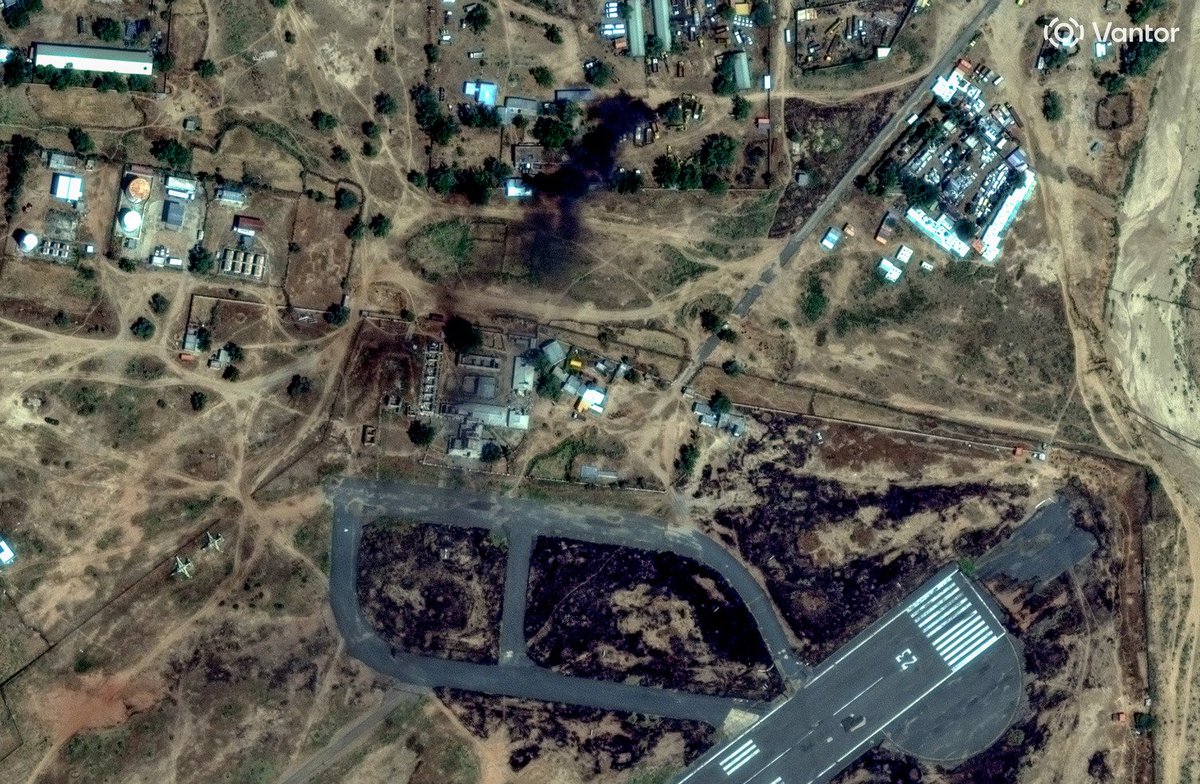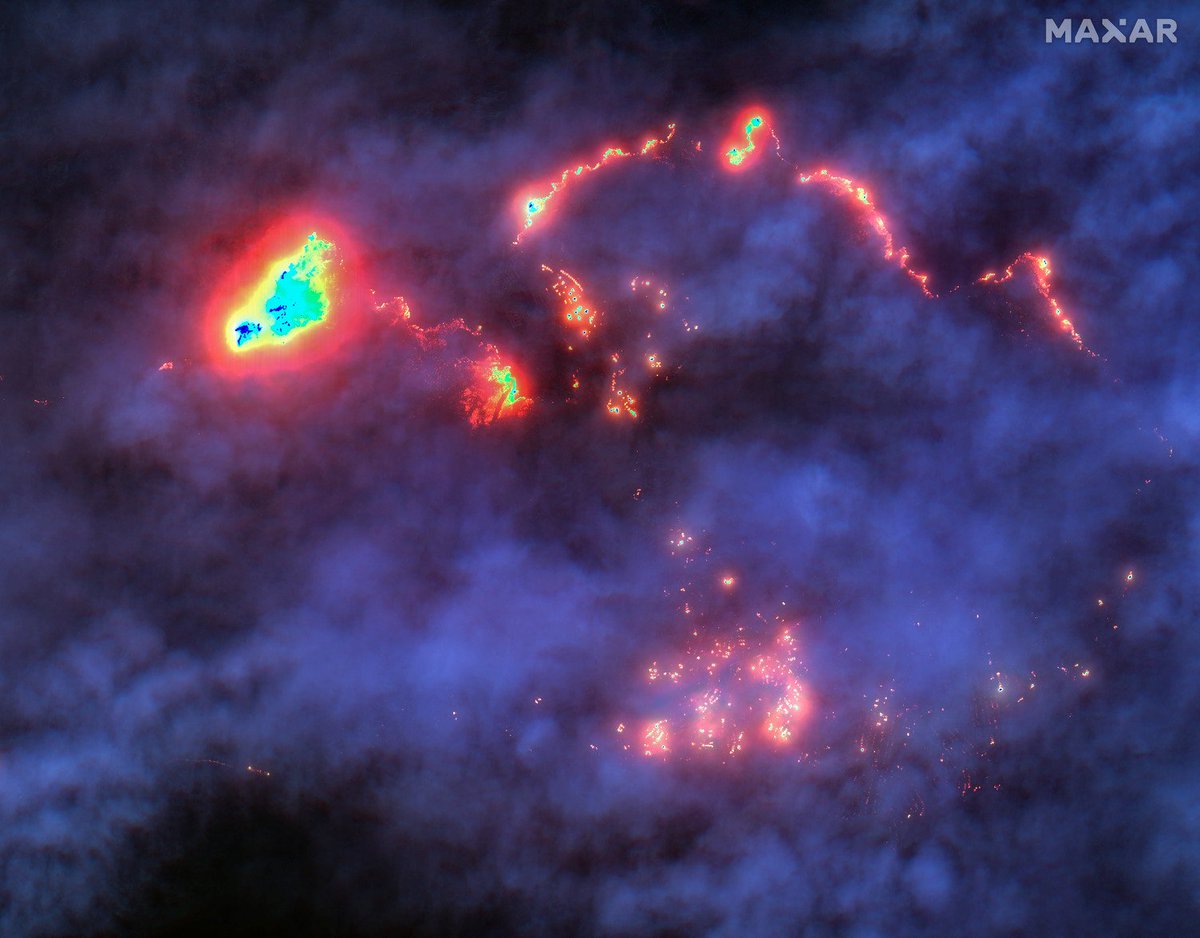We analyzed dozens of battlefield radio transmissions between Russian forces in Ukraine during the initial invasion of Makariv, a town outside Kyiv. They reveal an army struggling with logistical problems and communication failures: nytimes.com/video/world/eu…
It's not clear why some Russian units use open frequencies, but it allows ham radio hobbyists to listen to and record real-time front line chatter via web-base radio receivers, which is what @projectowlosint, Ukraine Radio Watchers, @Shortwave_Spy, @sbreakintl & others are doing.
We focused on radio intercepts from the first 24 hours of the Russian assault on Makariv, a town west of Kyiv along the strategic E-40 highway. The intercepts give a rare unvarnished window into the operations of an invading army.
So how did we determine that these voices are Russian troops speaking? By linking the radio exchanges with visuals we geo- and chrono-located, and interviews with local residents. Here's an example of such a corroboration:
This transmission is about a battle in Motyzhyn, a village southeast of Makariv, in which call sign YUG-95 reports his unit pulled out of the battle and lost an armored tracked vehicle called an MT-LB.
We matched YUG-95's report with a Telegram post of the mayor of Makariv (“our guys are mowing down enemy column near Motyzhyn”), videos showing Russian vehicles entering the village that day, along with damaged and abandoned armor, including an MT-LB.
Motyzhyn is just one of many specific battle locations around Makariv that we heard Russian troops mention on the radio intercepts. We cross-checked these with visuals we geolocated to document sites and times of Russian military activity.
[For textual/search reference, the locations mentioned are Makariv (Макарів), Fasivochka (Фасівочка), Kalynivka (Калинівка), Kopyliv (Копилів), Motyhzyn (Мотижин), Yasnohorodka (Ясногородка) and Borodianka (Бородянка).]
So what we were able to capture are mostly visual and audio fragments — not necessarily the full sequence of events. But by piecing them together, we can establish the dynamics that were playing out on the ground during the battle for Makariv. ⬇️
It's the morning of Feb. 27 when residents spot V-marked military vehicles moving into the area: from Borodianka to Lypivka and then Makariv. 







Soon, we hear Russian troops on the radio giving battlefield updates — and openly disclosing attack plans for anyone to hear. Here, they're claiming they shot down an Ukrainian helicopter with “two Strela [missiles].”
The language is often raw. In this transmission, an intention to strike is disclosed. “Give me all the coordinates, let's make strikes. We'll [expletive] blow them apart into pieces, these [expletive] [expletive]. Over.”
In another transmission, we hear the repeated order to cover the entire residential neighbourhood with artillery after the “property” (хозяйство) has been removed — a likely codeword for Russian personnel or equipment. This could be a war crime.
Residents in Makariv and surrounding villages including Kopylov and Motyzhyn told us Russian forces fired randomly into their houses with small arms and at least once with a tank round, as what happened to this house where a family was sheltering in Lypivka. They survived.
The following notorious CCTV footage shows a Russian BMP-2 vehicle rolling into view in Makariv and firing several rounds into a civilian sedan — without any apparent warning or provocation. The elderly couple inside was killed instantly.
What's interesting to note is that —outside of the “cover the residential neighbourhood with artillery”— we haven't noted Russian units discussing these incidents with civilians on the radio. Instead, we hear them talking about their own losses.
Russian troops in Makariv were met with fierce resistance and took significant losses. This transmission captures a frantic dispatch of a unit under attack. The voice is in clear distress.
The Russian unit also spotted a likely Ukrainian drone over the area while they were “under fire from all directions.” Later that evening, a video was released showing a Bayraktar drone strike, which we geolocated the video to northern Makariv.
The next morning, Feb. 28, a Ukrainian fighter filmed the drone strike aftermath and sent it to us. “Look what we have here [...] a destroyed part of the Russian column. Radars, BUKs, tractor trailer/towing vehicle, SAU [self-propelled artillery].”
https://twitter.com/UAWeapons/status/1504212887161683970
In this series of exchanges, we hear how comms failures delay urgent requests for Russian air support amid mounting casualties. Thirty minutes after the unit requested help: “You forgot about air support, [expletive] air support! You forgot!”
The radio chatter is full of Russian troops who lack critical supplies, too. Two examples:
“I urgently need refueling, water, and food.”
“Vehicles stalling in the road. Urgently need fuel.”
“I urgently need refueling, water, and food.”
“Vehicles stalling in the road. Urgently need fuel.”
Ukrainian officials claimed yesterday that they've pushed the Russian forces out of Makariv, nearly a month after they moved in. But at a devastating cost. And fighting in the area continues. 







This piece was a big team effort by the Visual Investigations team: @robinnyc7, @msalexkoroleva, @NatalieReneau, @DrewJordan_NYT and @markscheffler.
Also a big thanks to @SternlichtEmily, @whitney_hurst @dim109, @zaynman, @sjalfano, @GroznyMazay, @ebullienceog, @CITeam_en, @8cBoeing, @KofmanMichael, @oryxspioenkop, Pieter-Tjerk de Boer, @UAWeapons — and all local residents willing to talk to us after fleeing their towns.
This is not the first time that the Visual Investigations team at @nytimes analyzed intercepted Russian radio communications. Three years ago, we proved Russia bombed four Syrian hospitals in a single day using similar communications.
We also found that Russian Air Force pilots would sometimes use the codeword “sent candy” to indicate they had launched a weapon. In one instance, that “candy” killed 43 civilians at a busy commercial street in Syria.
The Visual Investigations team will continue to investigate incidents during the Russian invasion of Ukraine. We regularly contribute updates to the @nytimes liveblog too. Feel free to reach out via DM, I can provide secure ways of communication too.
And for the “whataboutism” of whether we also investigate the Pentagon and allies.. of course we do. See our landing page for all our work: nytimes.com/spotlight/visu…
You can now watch the full 9-minute Visual Investigation on YouTube, too:
• • •
Missing some Tweet in this thread? You can try to
force a refresh

























